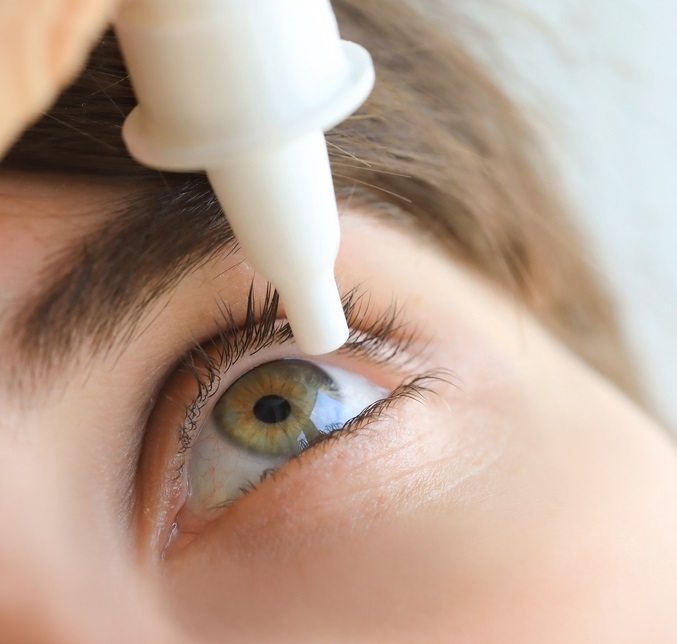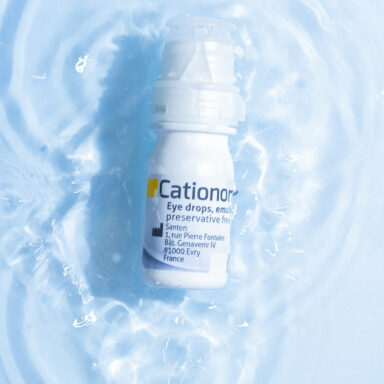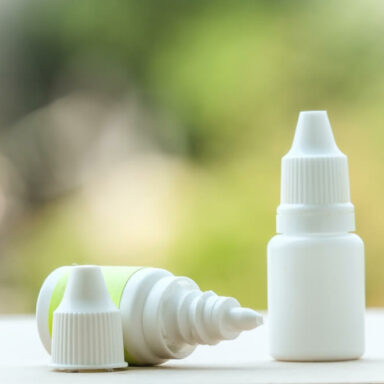You might think of your body’s natural tears as just salty water but there’s much more to it than that – it’s a delicate balance of water, oil, and mucus (known as the tear film) that protects and lubricates the eye.1 When that goes out of whack, you can develop dry eye.1
Artificial tears mimic real tears.2 You can think of them as a helpful sidekick or support act, working to boost the quality and quantity of your natural tears.2 They also help your tears stay in place where they are needed for longer, instead of evaporating or running down your face (in the case of watery eyes caused by dry eye!).3,4
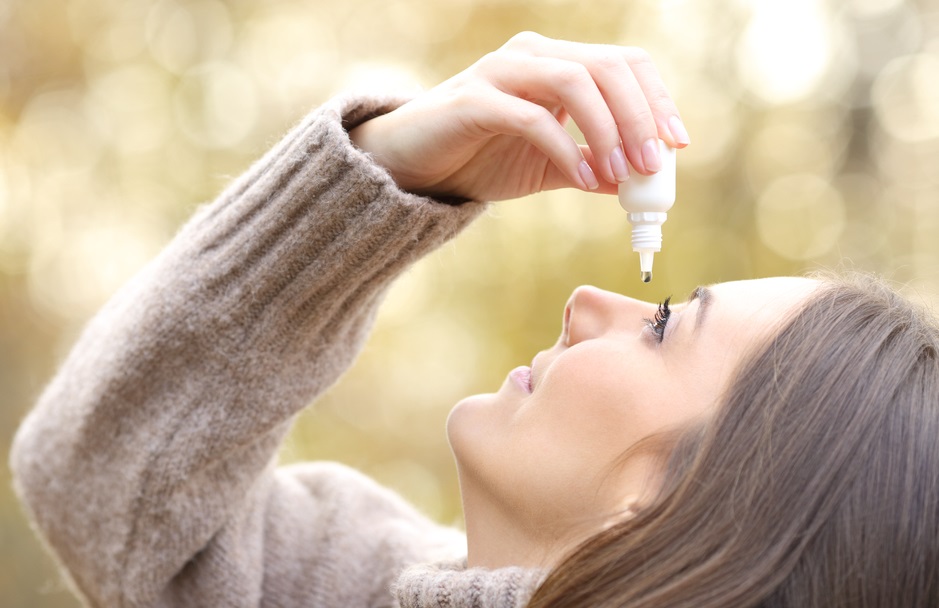
Types of artificial tears
There are lots of different types of artificial tears available without prescription from your local pharmacy or you can get them online. These, generally, fall into two categories:5
- Eye drops with preservatives
- Preservative-free eye drops (like Ocutears Hydro+, Ocutears Alo+ & Cationorm)
Many eye drops contain a preservative used to prolong the shelf life of the solution, but recent studies show that, over time, it can actually make dry eye worse.6 That’s because preservatives are a type of detergent and break up the oil part of the tear film.6 With long term use, it can cause unwanted side effects like allergic reaction, redness, irritation and inflammation.6 With that in mind, you’ll be glad to hear that all of the artificial tears in our online shop are preservative free!7,8,9
You might also come across artificial tears with extra bonus features too, such as:
- Aloe Vera – is a moisturiser and antioxidant, shown to have antimicrobial and anti-inflammatory properties, which helps to reduce redness and swelling. For more information, check out Ocutears® Alo+ 9,10,11,12,13,14
- Ionic formula – This means the formula is positively charged and so it locks to the naturally negatively charged surface of the eye. As a result, drops are long lasting and may not need to be reapplied as often.18 Cationorm® is the first and only artificial tear to feature this.7
- Cross-linked sodium hyaluronate (0.4%) – Ocutears® Alo+ and Ocutears® Hydro+ contain cross-linked sodium hyaluronate (0.4%), a moisturiser naturally found in the body which also works to keep the eye drops in place where they are needed .3,15
Top tip
Some eye drops contain sodium hyaluronate but look for the cross-linked version of sodium hyaluronate – it lasts longer meaning you may not need to apply as often as alternative eye drops (without cross-linked sodium hyaluronate)3,8,9,16
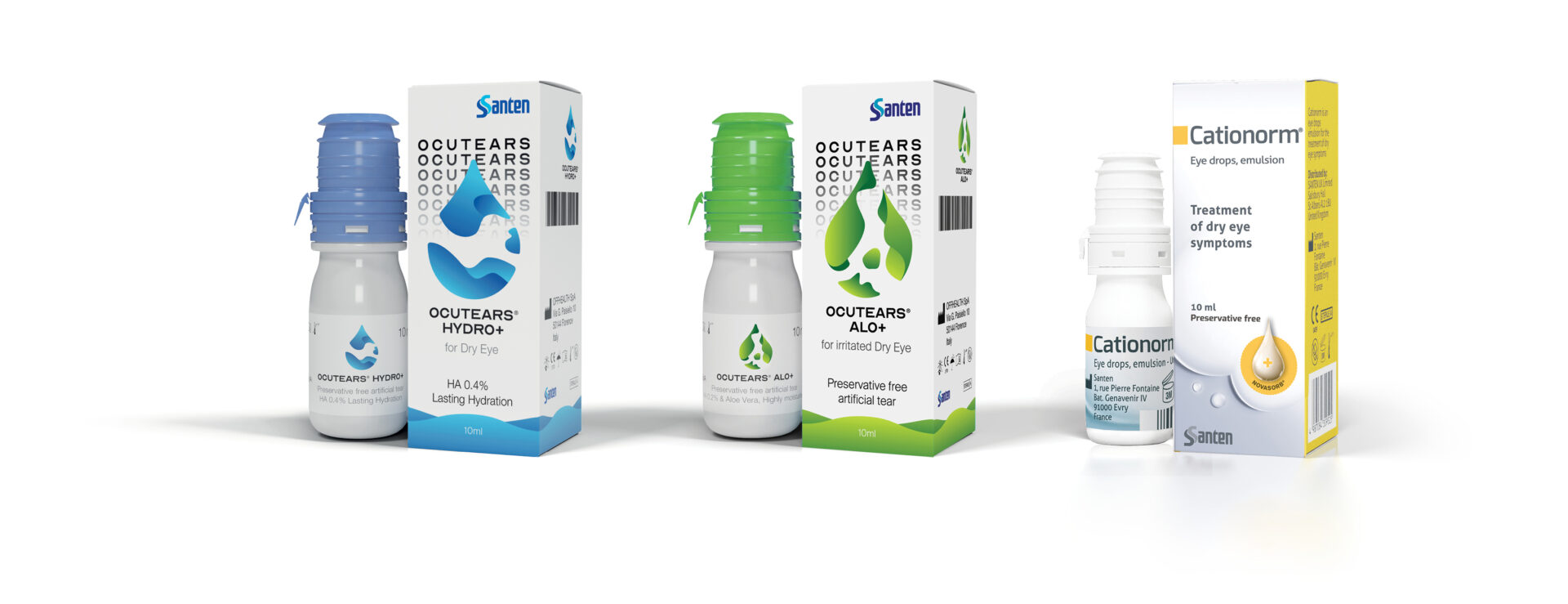
Always read the label.
What do artificial tears do?
Artificial tears mimic the real tears that the glands in your eyes make – In general, they work to:2
- Make your eyes feel less dry
- Create a protective cover on your eyes
- Make blinking feel smoother and less scratchy
- Help protect your eyes from getting hurt (by increasing your tear film)
- Help wash away any dirt, allergens, or irritants that might be on your eye’s surface
- Lower the chance of your eyes getting swollen or infected
- Reduce redness
What conditions can artificial tears help with?
Artificial tears are the go-to option for managing the symptoms of dry eye, such as:18,19
- Itchiness
- Soreness
- Gritty feeling
- Redness
- Blurry vision
- Sensitivity to light
- Watery eyes
Symptoms of dry eye can be triggered by many things, including:
- The environment, such as exposure to wind, air conditioning, smoke, prolonged screen use20
- Hormone changes, such as the menopause and pregnancy20
- Long term medical conditions such as Sjögren’s Syndrome and autoimmune conditions such as Lupus, arthritis and diabetes20
- Other eye conditions like blepharitis and glaucoma21,22
- Allergies, such as hayfever20
- Certain medications20
- Diet, such as vitamin A deficiency or dehydration20
- Contact lens use20
Did you know?
You can also develop dry eye simply because you’re tired (this usually goes away with enough sleep!), or as part of the aging process.20,23
How to use artificial tears
Using your eye drops correctly is crucial for effective treatment. Luckily, they’re easy to apply, just make sure you always read the instructions on the product package:24
- Always start by washing your hands
- Avoid contaminating the dropper or ointment tube by ensuring it doesn’t touch your eye or fingers
- Replace the cap securely after each use
- Tilt your head back, look up, and pull down your lower eyelid to create a pouch
- For drops or gels, dispense the correct number of drops directly into the pouch, close your eye for a minute or two, then apply gentle pressure at the corner of your eye near your nose. This helps stop the drops from draining away into the nose
- If you’re using multiple eye medications, wait at least five minutes between each
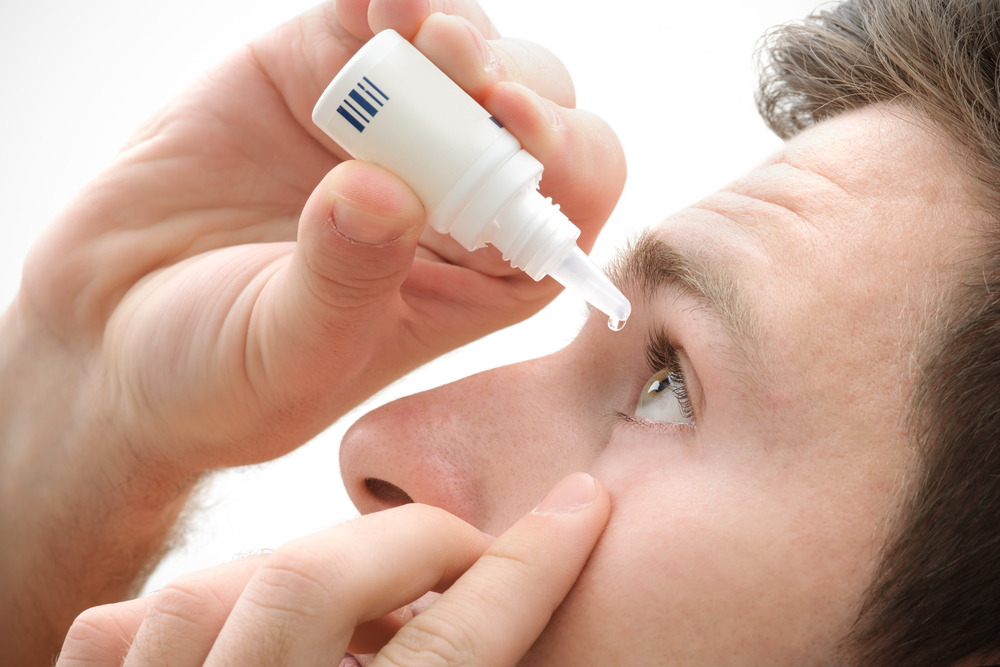
Did you know?
There is good evidence that artificial tears improve symptoms of dry eye disease within a month of regular use, but signs generally take several months to improve.19Consistency is key!19
For more in-depth tips on applying your eye drops, check out our blog dedicated to it!
Can you use artificial tears with contact lenses?
Yes! After you’ve been wearing your contact lenses for a while, they can become drier and tighter.19 Using artificial tears is a great way to reduce the friction of the contact lens against the eye so that they feel more comfortable again.19
Top tip
Make sure you choose an artificial tear which is preservative free as those with preservatives can stick to the lens and cause irritation.25
Can artificial tears help with allergies?
Sometimes it’s hard to know if you’ve got an allergy or dry eye as they can have similar symptoms. However, if you’re experiencing eye discomfort alongside a runny or stuffy nose, or an itchy throat, it’s likely an allergy.26
Antihistamines can directly target an allergy, but you might want to consider also using artificial tears for a couple of reasons:26
- Artificial tears can help relieve any dry eye symptoms caused by the allergy, such as itchy, sore or red eyes
- Sometimes antihistamines can aggravate dry eye and make eyes drier, so, many doctors recommend taking artificial tears along with allergy medication.
Are there lifestyle changes that can help with dry eye?
As with so many health conditions, getting enough sleep, eating a healthy diet, drinking enough water and avoiding smoking and excessive alcohol are helpful starting points.20,27,28,29
However, you may find that certain things in your environment, or activities, trigger your dry eye or make it worse. Some common culprits include:20
- Air conditioning
- Air travel
- Car air vents
- Smoky rooms
- High altitude or dry air
- Wind
- Excessive digital screen use
If you can’t avoid these trigger situations, then try using artificial tears if you start to experience dry eye symptoms.20
Remember, dry eye can be a chronic condition, so use your artificial tears regularly when experiencing symptoms, stick with them, and your eyes will thank you.19,20
If you are unsure about your diagnosis, please speak to your doctor or pharmacist.


